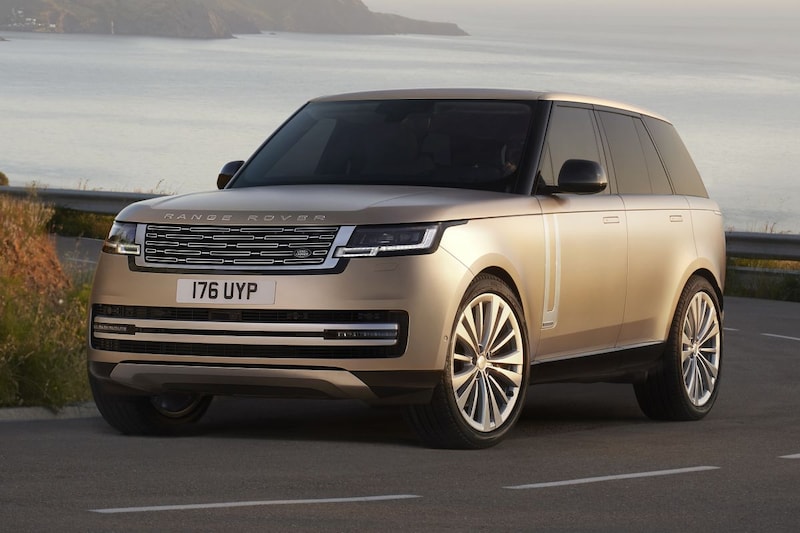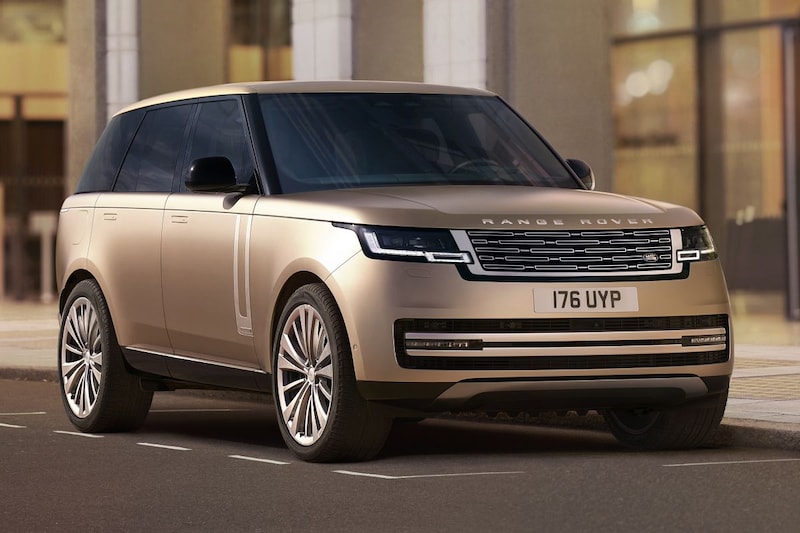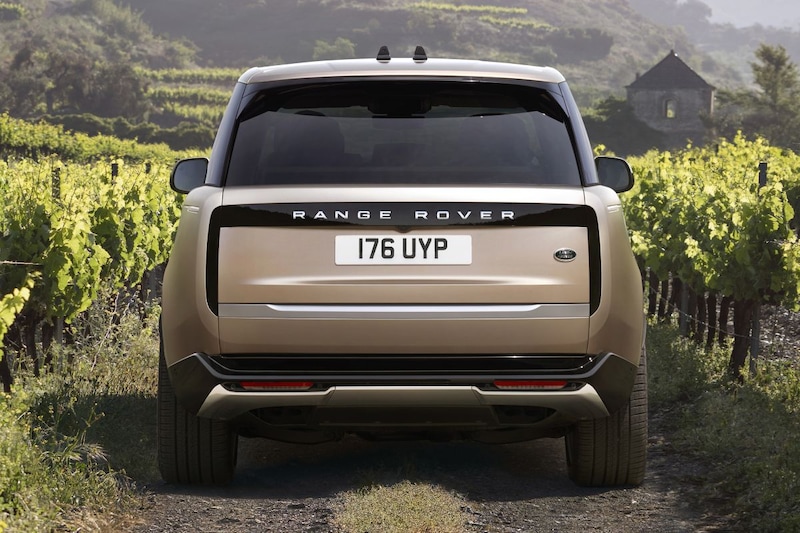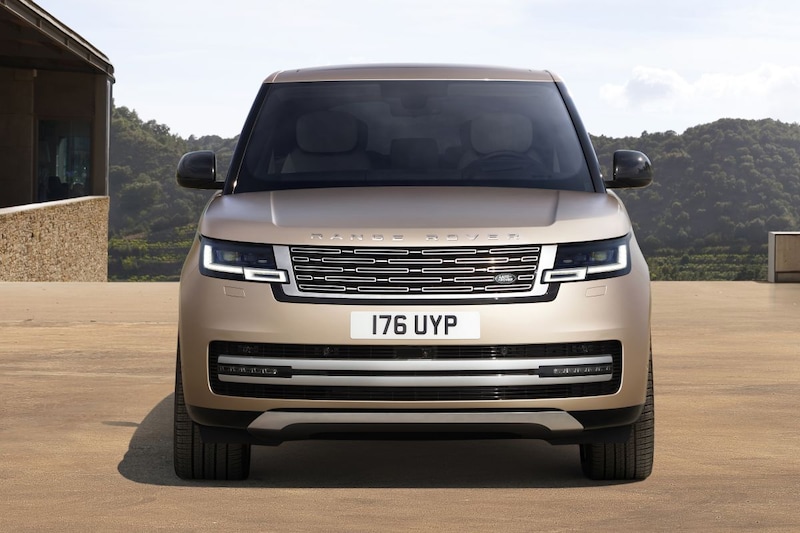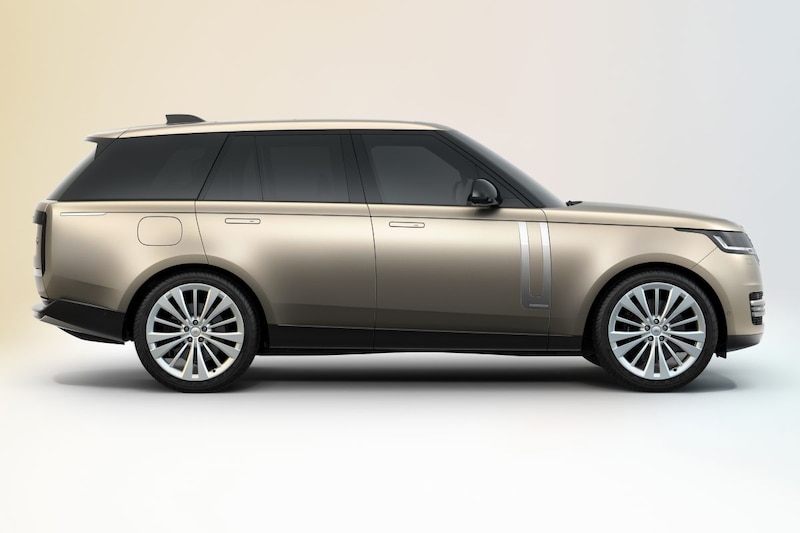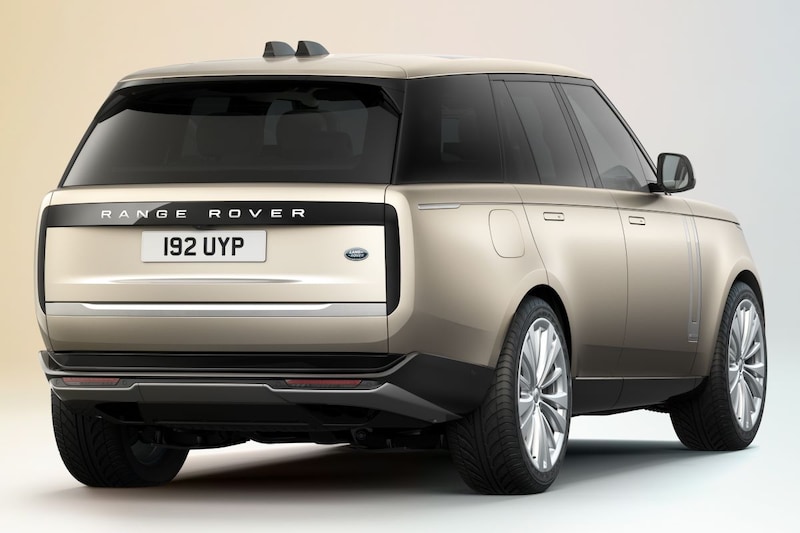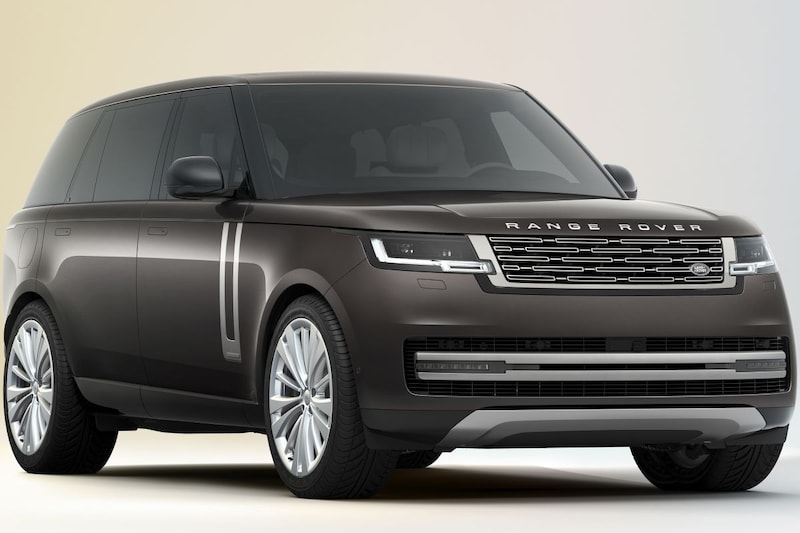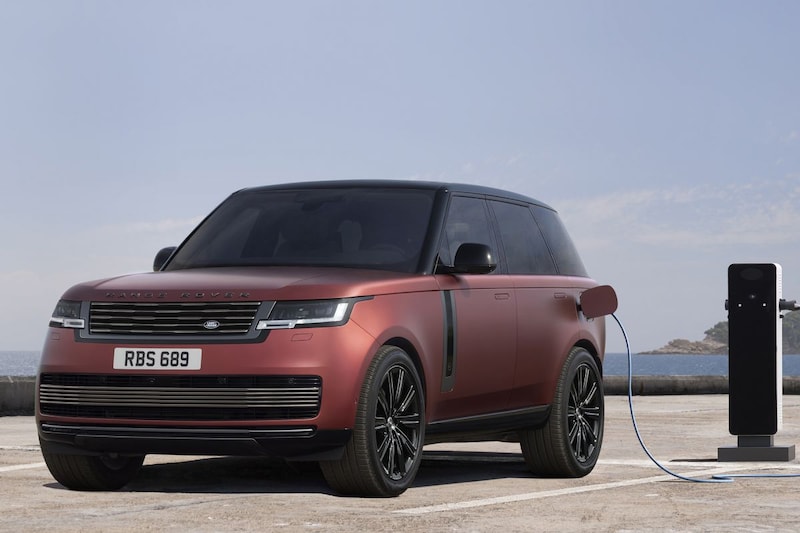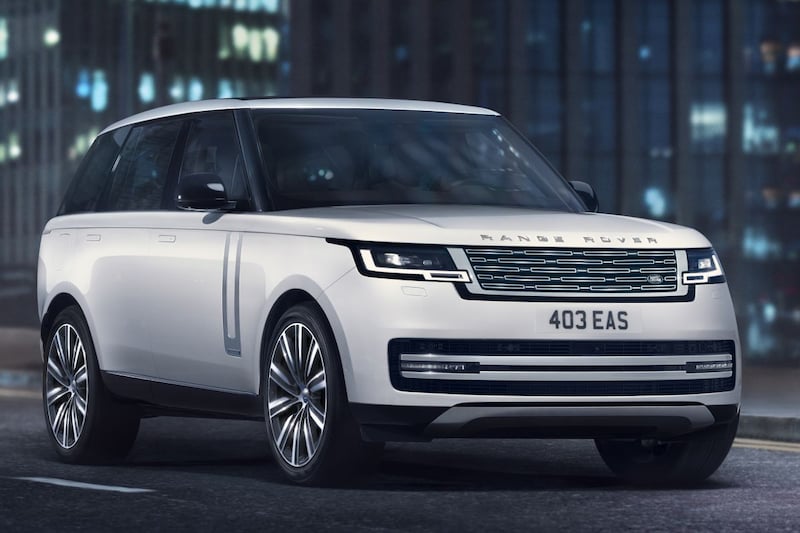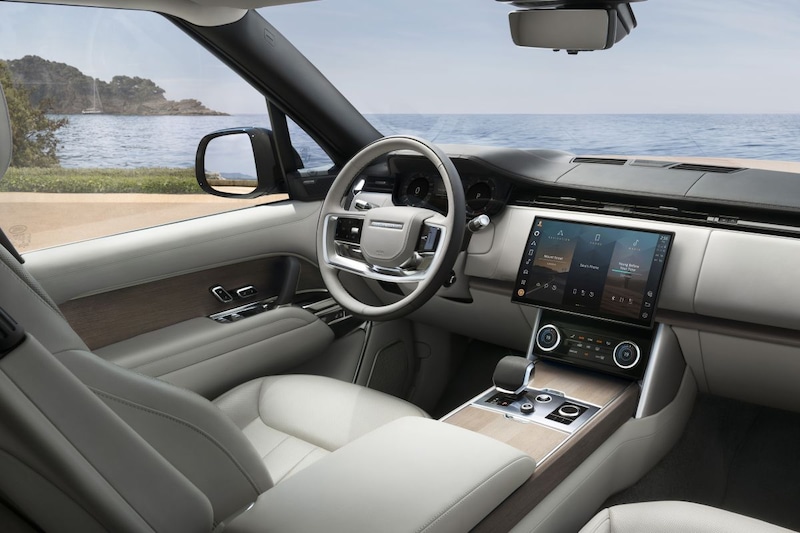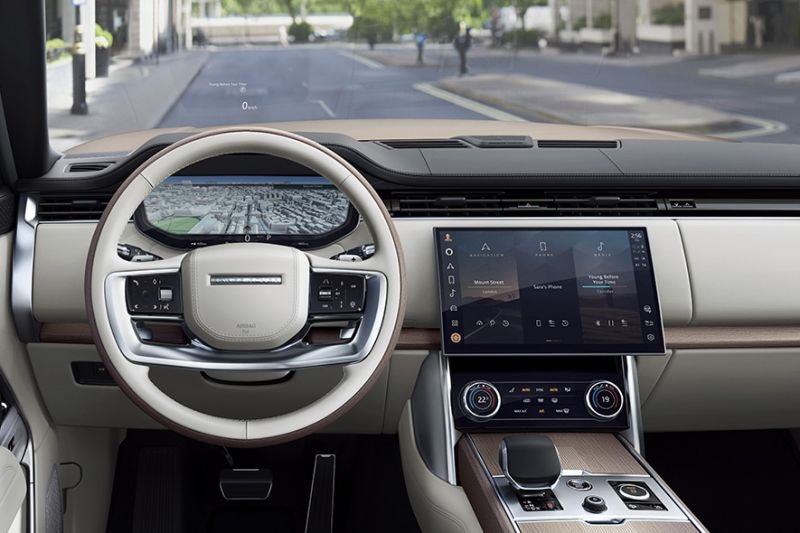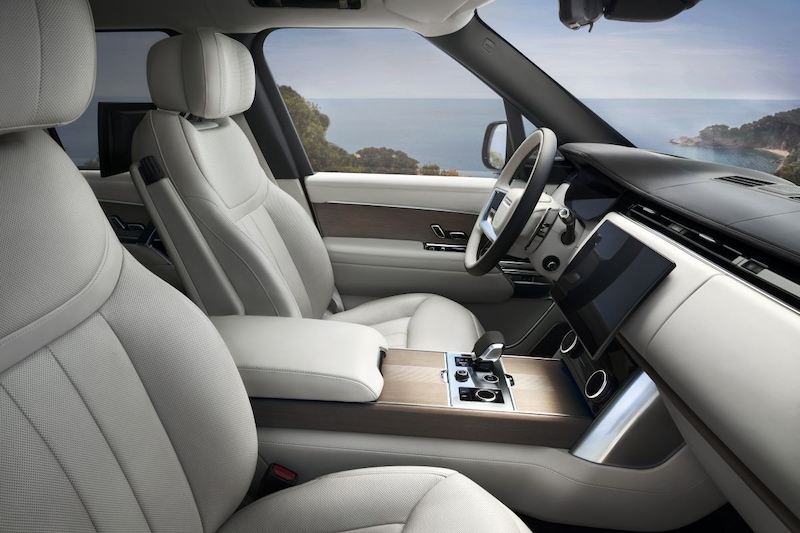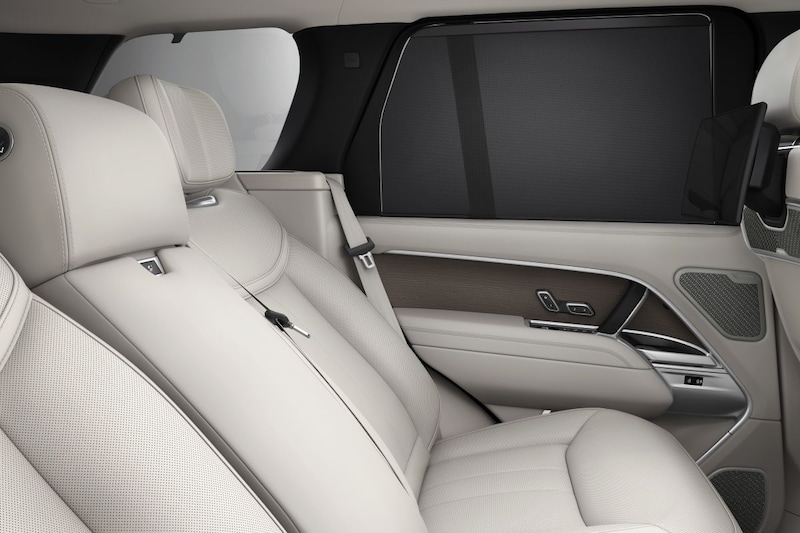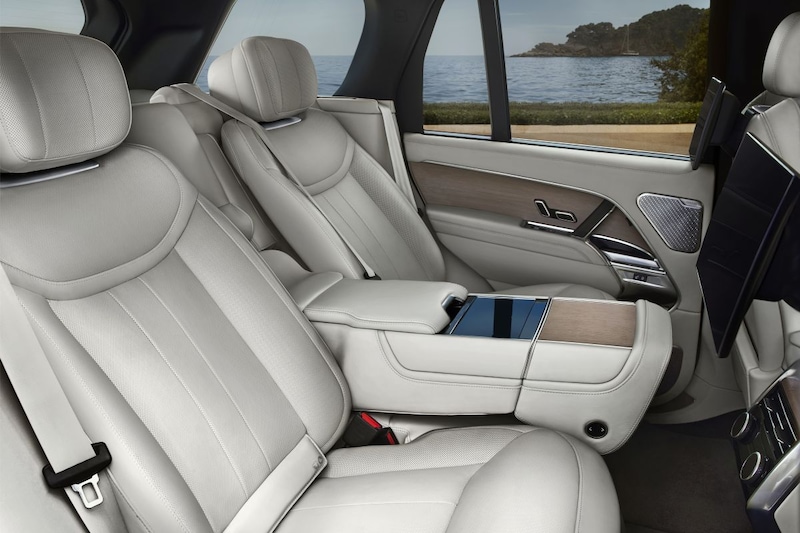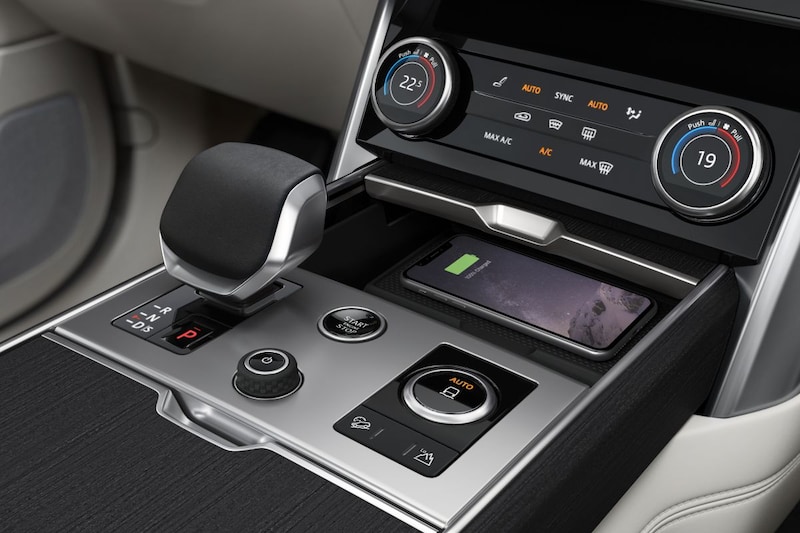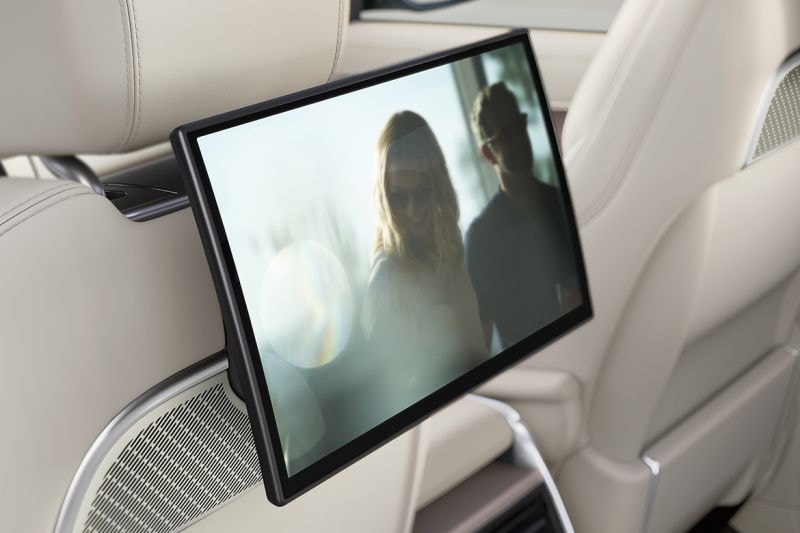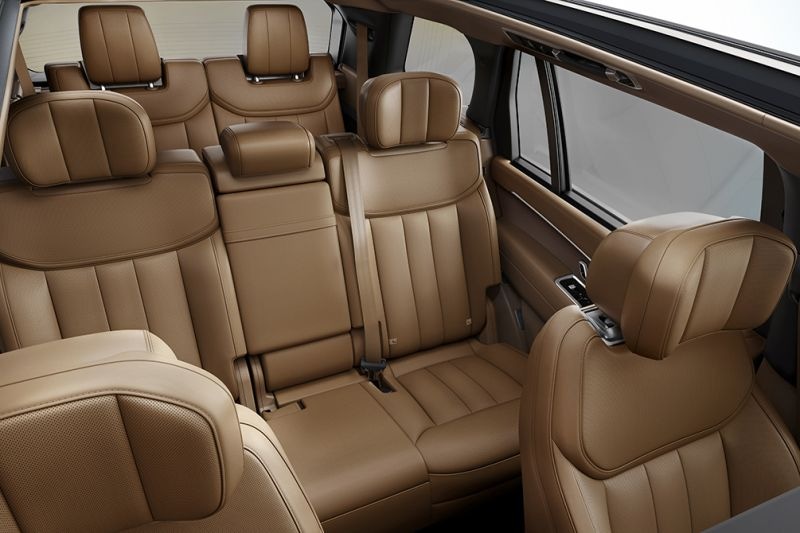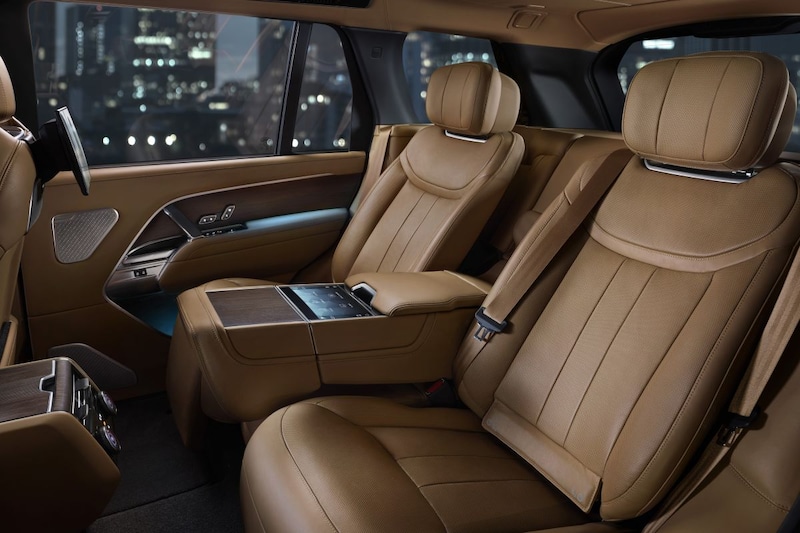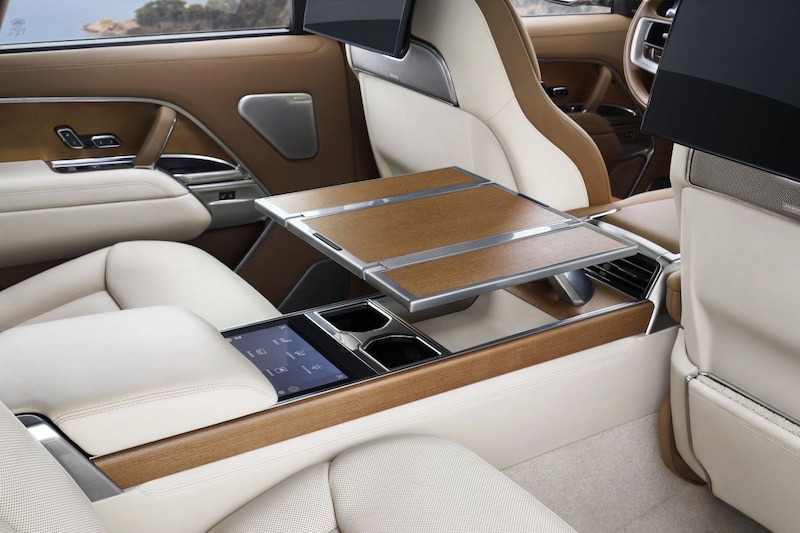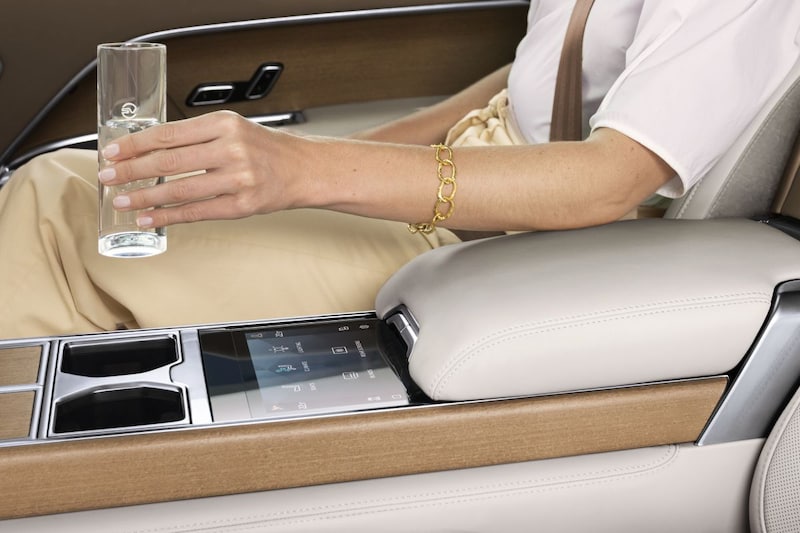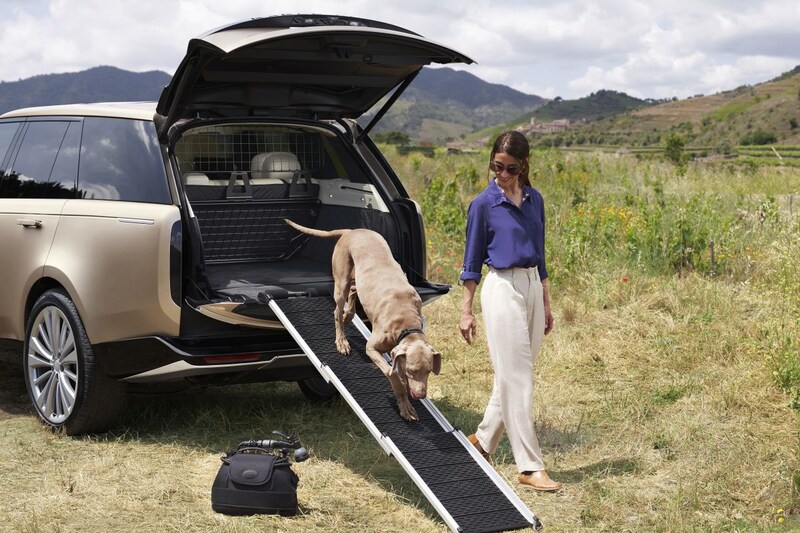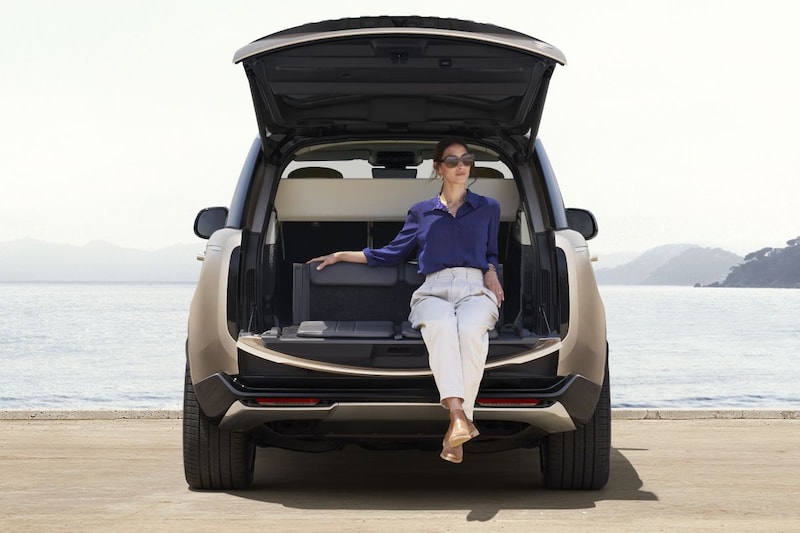The new Range Rover is smoother and sleeker, yet everyone can see what it is at a glance. Land Rover’s super-SUV comes as a seven-seater and from 2024 it will also be fully electric. It is also available as a plug-in hybrid and as a mild hybrid with both diesel and petrol engines. And of course there is another V8.
Highlights
- Pure electric from 2024
- Also for seven adults
- Multimedia with Amazon Alexa
- Four-wheel steering
Jaguar Land Rover has developed an all-new platform architecture: Modular Longitudinal Architecture (MLA). We had expected this build system to debut with the new Jaguar XJ of which we have already seen camouflaged copies driving, but that introduction has been canceled (for now?). The scoop for the new basic architecture is therefore now for the all-new, fifth-generation Range Rover, which is now officially referred to as MLA-Flex. In all its modularity, this new architecture is not only suitable for building various models, it also offers flexibility for length variants. As a result, the new Range Rover will also come in two lengths, just like the current generation. Both variants have grown by five centimeters: the SWB is now 5.05 meters long from front to rear bumper and the LWB no less than 5.25 meters. The distance between the front and rear axle has also grown, in both cases by 7.5 centimeters, making the short wheelbase 3.00 meters and the long wheelbase 3.20 meters.
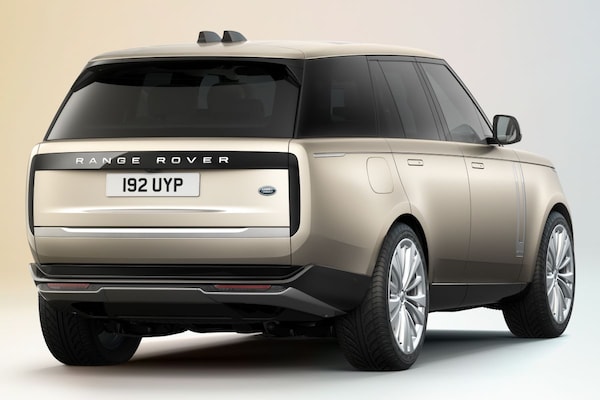
From V8 to BEV
With each new generation, Jaguar Land Rover continues to improve the performance of its flagship both on and off road. The fifth generation is no exception, according to the Land Rover engineers. For starters, the 80 percent aluminum body (depending on trim level) is between 40 and 50 percent stiffer than the previous edition, thanks in part to the stiffness of added battery packs. In addition, the front and rear axles both have an active anti-roll bar (48 volts, 1,400 Nm) that should keep the body nice and flat on-road and give the wheels all the freedom to follow the surface off-road. Furthermore, a completely new rear axle construction has been developed that makes four-wheel steering possible (and thus a turning circle of only 11.37 meters!), but can also accommodate an electric motor. Indeed, an electric motor: from 2024 you can order the Range Rover with a fully electric powertrain. You just have to wait a little longer for the specifications of that machine, it is still under development.
The other drive variants are much more specific. To keep it somewhat affordable in the Netherlands, it will appear next year with plug-in hybrid powertrains (440 or 510 hp). If you are not waiting for cars with a plug, the engine range consists of six and eight cylinders. All this almost naturally in combination with an eight-speed automatic transmission. The six-cylinder units are three 3.0-litre diesels with 249, 300 and 350 hp respectively, the fourth six-cylinder is a three-litre petrol engine that peaks at 400 hp. All four six-cylinder engines are fitted with 48-volt mild hybrid technology. The absolute topper in good Range Rover tradition is of course a V8. This 4.4-liter eight-cylinder is in fact the same that we also encounter at BMW, but completely ‘overland rover’. The electronics, as well as its sound composition, are completely focused on the Range Rover. If you kick it on the tail, the V8 is good for 530 hp and 750 Nm and it brings the two-and-a-half ton Range Rover from a standstill to 100 km/h in 4.6 seconds.

Exterior
With its so-called floating roof, striking bonnet curves, short front and long rear overhangs, the fifth generation is immediately recognizable as a real Range Rover. According to good Range Rover tradition, the tailgate consists of a lower and an upper part. The lower part of the tailgate is flanked by the vertical taillights that seem to form one whole with the horizontal dark strip with the letters Range Rover (which also hides LEDs). In order to comply with the traffic rules even with the tailgate open, there are also narrow light units in the bumper. Balancing tradition and progression, the design of a new Range Rover always seems more evolution than revolution. However, thanks to its large wheels (up to 23 inches on request!), recessed doorknobs, large smooth panels and the optically continuous windows, the newcomer looks a lot like a tightly modeled concept car. Yet this is the car as it goes into production.
Interior and gadgets
And just as on the outside, the familiar Range Rover design language has been the starting point for the interior, resulting in a living space with a high-quality appearance in every way. Most striking is the large, slightly curved 13.1-inch multimedia screen that seems to float in front of the dashboard. The choice of materials is further expanded, while keeping the ecological footprint in mind. For example, a combination with Ultrafabrics should provide an upholstery material that is lighter than traditional leather, while 75 percent less CO2 is emitted during the manufacturing process of this upholstery fabric. Not all innovations are visible, by the way, numerous systems that increase your well-being in the car are hidden from view, such as active noise suppression that can create individual quiet zones in the car: vibrations of the wheels and noises from the tires and from the powertrain that enter the interior are neutralized with an anti-signal via 35 speakers. In addition, the new Range Rover will receive an air purification system with a PM2.5 particulate filter and technology with which the English claim that odors, bacteria and allergens including the covid virus can be eliminated.
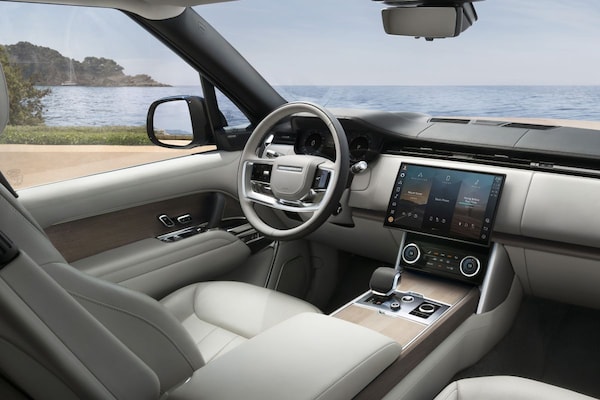
The multimedia system uses Amazon Alexa voice control with which you can verbally command and ask the car all kinds of things. Furthermore, the system works wirelessly with Apple CarPlay and Android Auto and you can remotely check your car and park in and out of it via your phone. In all, more than 70 computers are continuously working for you to get you where you want to be in the right condition. One of the two shark fin antennas on the roof is primarily intended for over-the-air software updates that can be performed without having to park the car on the side of the road.
use of space
JLR’s modular architecture, which is now making its debut with the new Range Rover, offers the option of building the car with a standard and long wheelbase: the SWB and the LWB. You can order the latter not only as a five-seater, but thanks to the growth spurt, from now on also with a third row of seats, making it a seven-seater. To curb claustrophobia, the rear row of seats is 41mm higher than the row in front. This makes it easier to see over the passengers in the regular rear seat through the windscreen. The regular rear seats can be moved in the seven-seater to facilitate entry to the rear.

If you put a price on it, the LWB is also available as a four-seater with two seats in the back that wouldn’t look out of place in business class. Those seats are separated by a center console that is equipped with all kinds of convenience-enhancing facilities.
For horse saddles, golf bags or hunting rifles, you have 725 liters of luggage space available in the five-seater under the roll cover. With the seven-seater you deliver 11 liters of it as long as you do not use the third row of seats. If all seats are upright, you have to fight with seven for the 229 liters that are still available.
Special Vehicle
If you cannot find what you are looking for in the regular price list, you can contact the Special Vehicles Operations (SVO) department for a Range Rover SV. There you can make it as crazy as you want. Incidentally, according to the director of SVO, the Dutchman Michael van der Sande, a Range Rover SV is not just about very big engines or luxury in the superlative, it is just as much a PHEV with eco-friendly upholstery. It’s about the attention to detail. What about the ceramic control elements (buttons, gear lever) or veneer with a unique inlay pattern, for example? And to distinguish itself, the Range Rover SV also gets SV logos made of ceramic on the outside.
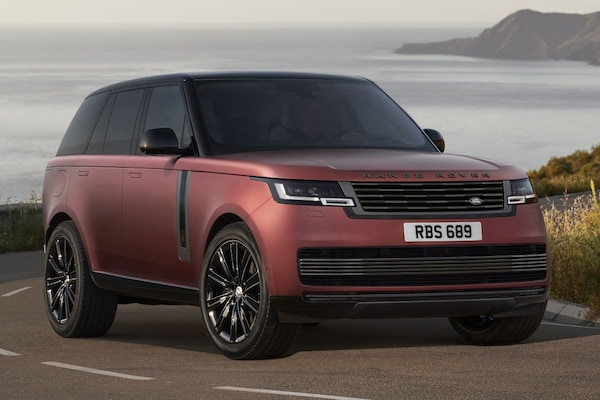
Range Rover SV
Anyway, SV or not: sitting in the new Range Rover is like sitting in the armchairs of a chic gentlemen’s salon; the craftsmanship with which that car has been finished is striking. And if it really takes off like the people who invented it say (we’ll know early next year), we’re curious to see if anyone else is missing an XJ.
– Thanks for information from Autoweek.nl
